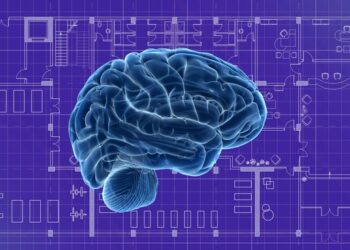In today’s rapidly evolving educational landscape, harnessing the power of data analytics has become a game-changer for enhancing teaching methods and student outcomes. Educators and institutions are increasingly turning to sophisticated tools and techniques to gather, analyze, and apply insights from vast amounts of information.
This approach not only identifies areas needing improvement but also fosters personalized learning experiences that cater to diverse student needs. By integrating data-driven strategies, schools can optimize their instructional practices, leading to more effective and engaging classrooms.
Understanding the Role of Data Analytics in Education
Data analytics involves the systematic examination of raw data to uncover patterns, correlations, and trends that inform decision-making. In the context of education, this means collecting information from various sources such as student performance metrics, attendance records, engagement levels, and even feedback surveys.
Unlike traditional methods that rely on intuition or anecdotal evidence, data analytics provides empirical evidence to guide instructional improvements.
One key aspect is descriptive analytics, which summarizes what has happened in the past. For instance, it can highlight dropout rates or average test scores across different demographics. Predictive analytics goes a step further by forecasting future trends, such as identifying students at risk of failing a course based on early indicators.
Prescriptive analytics offers recommendations on how to address these issues, suggesting interventions like tailored tutoring sessions.
The integration of big data technologies has amplified this capability. With the advent of learning management systems (LMS) like Canvas or Moodle, educators can track real-time interactions, such as how long students spend on assignments or which resources they access most frequently. This wealth of data empowers teachers to refine their approaches, ensuring that instruction aligns with actual student behaviors and needs.
Benefits of Data Analytics for Instructional Enhancement
Implementing data analytics in education yields numerous advantages that directly contribute to better teaching and learning. First and foremost, it promotes evidence-based decision-making. Teachers no longer have to guess why certain students are struggling; instead, they can pinpoint specific weaknesses, such as difficulties with mathematical concepts, through detailed performance breakdowns.
Personalization is another major benefit. Every student learns differently, and data analytics allows for the creation of individualized learning paths. For example, adaptive learning platforms use algorithms to adjust the difficulty of tasks in real-time, ensuring that advanced students are challenged while those needing support receive it promptly. This not only boosts engagement but also improves retention rates.
Moreover, data analytics facilitates collaboration among educators. By sharing anonymized data insights, teams can identify best practices and replicate successful strategies across classrooms. In larger institutions, this can lead to systemic changes, such as curriculum revisions based on aggregate data showing gaps in skill development.
Cost-efficiency is often overlooked but crucial. By predicting resource needs, schools can allocate budgets more effectively, avoiding wasteful spending on ineffective programs. For instance, analytics might reveal that investing in digital tools yields higher returns than traditional textbooks in certain subjects.
Finally, it enhances accountability. With clear metrics, stakeholders—including parents, administrators, and policymakers—can track progress and hold educators responsible for outcomes. This transparency builds trust and encourages continuous improvement.
Key Components of a Data Analytics Framework in Education
To effectively drive instructional improvement, a robust framework is essential. This typically includes several interconnected elements:
A. Data Collection: The foundation starts with gathering high-quality data from multiple sources. This encompasses academic records, behavioral observations, and even external factors like socioeconomic data. Tools such as Google Forms for surveys or integrated sensors in smart classrooms can automate this process.
B. Data Storage and Management: Secure, scalable storage solutions are vital. Cloud-based platforms like AWS or Google Cloud ensure data is accessible yet protected under regulations like FERPA (Family Educational Rights and Privacy Act) in the US.
C. Data Processing and Analysis: Advanced software, including AI-driven tools like Tableau or Power BI, processes raw data into actionable insights. Machine learning models can detect anomalies or predict outcomes with high accuracy.
D. Visualization and Reporting: Interactive dashboards make complex data understandable. Educators can view heat maps of student performance or trend lines over time, simplifying the interpretation process.
E. Actionable Implementation: Insights must translate into practice. This involves training teachers on how to use data and integrating it into daily lesson planning.
F. Evaluation and Iteration: Continuous monitoring ensures the framework evolves. Regular audits assess the impact of data-driven changes and refine the system accordingly.
G. Ethical Considerations: Privacy and bias mitigation are paramount. Frameworks should include protocols to anonymize data and audit algorithms for fairness.
H. Integration with Existing Systems: Seamless compatibility with current educational tools prevents disruption and maximizes efficiency.
I. Stakeholder Training: Comprehensive professional development programs equip all users with the skills needed to leverage analytics effectively.
J. Scalability: The framework should grow with the institution, accommodating increasing data volumes without performance loss.
Challenges in Adopting Data Analytics for Instruction
While the benefits are clear, several hurdles can impede adoption. Data privacy concerns top the list, as mishandling sensitive information can lead to legal issues and erode trust. Institutions must invest in compliant systems and educate staff on best practices.
Another challenge is the digital divide. Not all schools have equal access to technology, leading to disparities in implementation. Rural or underfunded districts may lack the infrastructure needed for real-time analytics.
Skill gaps among educators pose a significant barrier. Many teachers are not trained in data interpretation, viewing it as an additional burden rather than a tool. Overcoming this requires targeted professional development.
Integration issues with legacy systems can also slow progress. Older software may not interface well with modern analytics platforms, necessitating costly upgrades.
Resistance to change is cultural. Some educators prefer traditional methods, fearing that data analytics dehumanizes teaching. Addressing this involves demonstrating tangible successes through pilot programs.
Finally, the sheer volume of data can overwhelm users. Without proper filtering, important insights might be buried in noise, leading to analysis paralysis.
Strategies to Overcome Implementation Barriers
To navigate these challenges, strategic approaches are necessary:
A. Prioritize Privacy: Adopt frameworks like GDPR or CCPA-compliant tools and conduct regular audits to ensure data security.
B. Bridge the Digital Divide: Seek grants or partnerships with tech companies to provide affordable access to analytics tools.
C. Invest in Training: Offer workshops, online courses, and certifications to build data literacy among staff.
D. Start Small: Begin with pilot projects in select classrooms to build momentum and gather feedback.
E. Foster a Data Culture: Encourage leadership to champion analytics, integrating it into school missions and rewarding innovative uses.
F. Use User-Friendly Tools: Select intuitive platforms that minimize the learning curve.
G. Collaborate with Experts: Partner with data scientists or consultants for initial setup and ongoing support.
H. Monitor and Adapt: Regularly evaluate the system’s effectiveness and make adjustments based on user input.
I. Communicate Benefits: Share success stories to alleviate fears and highlight how analytics enhances, rather than replaces, human judgment.
J. Ensure Inclusivity: Design systems that account for diverse user needs, including accessibility features.
Case Studies: Real-World Applications
Examining practical examples illustrates the transformative potential of data analytics. In one urban school district, analytics revealed that students from low-income backgrounds struggled with reading comprehension due to limited home access to books. By prescribing targeted interventions like after-school reading clubs and digital libraries, reading scores improved by 25% within a year.
A university implemented predictive analytics to flag at-risk students early in the semester. Using data from attendance, assignment submissions, and quiz performance, advisors provided proactive support, reducing dropout rates by 15%.
In a K-12 setting, teachers used engagement data from online platforms to adjust lesson plans. When analytics showed low interaction with video content, they switched to interactive simulations, boosting participation and test scores.
Internationally, a program in Singapore leveraged national data sets to refine STEM curricula. Insights into skill gaps led to curriculum updates, resulting in higher international assessment rankings.
These cases underscore that when applied thoughtfully, data analytics can yield measurable improvements across various educational contexts.
Tools and Technologies Powering Data Analytics
A variety of tools facilitate this process. Open-source options like Python with libraries such as Pandas and Scikit-learn allow custom analysis. Commercial platforms include IBM Watson Education for AI-driven insights or Microsoft Education Analytics for seamless integration with Office 365.
Learning analytics-specific tools like Blackboard Analytics provide dashboards tailored to higher education. For K-12, tools like BrightBytes offer modules for clarity on technology use and student outcomes.
Emerging technologies like AI and machine learning enhance predictive capabilities. Natural language processing can analyze open-ended feedback, while blockchain ensures data integrity.
Selecting the right tool depends on factors like budget, scale, and specific needs. Institutions should evaluate options through trials to ensure fit.
Future Trends in Data Analytics for Education
Looking ahead, several trends promise to further revolutionize instructional improvement. AI integration will enable more sophisticated personalization, with virtual tutors adapting in real-time.
The rise of IoT in classrooms—through smart devices tracking environmental factors like lighting or noise—will provide holistic data sets.
Ethical AI will gain prominence, with frameworks ensuring unbiased algorithms. Federated learning, where data remains decentralized, will address privacy concerns.
Augmented reality combined with analytics could create immersive learning experiences, analyzing user interactions for optimization.
Blockchain for credentialing will verify achievements based on data trails, enhancing employability.
As quantum computing advances, processing speeds will handle even larger datasets, unlocking new insights.
These developments signal a future where data analytics is integral to education, driving unprecedented improvements.
Measuring the Impact of Data-Driven Instruction
To validate efforts, robust measurement is key. Key performance indicators (KPIs) include student achievement metrics like standardized test scores, graduation rates, and skill mastery levels.
Engagement proxies, such as attendance and participation rates, offer indirect measures. Longitudinal studies track long-term outcomes, like career success.
Return on investment (ROI) calculations assess cost savings from efficient resource use. Surveys gauge stakeholder satisfaction, providing qualitative data.
Advanced techniques like A/B testing compare data-driven vs. traditional methods. Machine learning models can predict impact before full implementation.
Regular reporting ensures transparency and allows for course corrections.
Ethical and Legal Considerations
Ethics must guide data use. Informed consent from students and parents is essential. Bias in algorithms—stemming from skewed training data—must be mitigated through diverse datasets.
Equity ensures that analytics benefits all groups, not just advantaged ones. Transparency in how data is used builds trust.
Legally, compliance with laws like COPPA for children’s data is non-negotiable. International variations require adaptability for global institutions.
Establishing ethics committees can oversee practices, ensuring alignment with core values.
Integrating Data Analytics into Curriculum Design
Beyond instruction, analytics informs curriculum development. By analyzing labor market data, educators can align content with in-demand skills.
Feedback loops from alumni surveys refine offerings. Predictive modeling forecasts enrollment trends, aiding planning.
Collaborative design tools, enhanced by analytics, allow iterative improvements based on real usage data.
This holistic approach ensures curricula remain relevant and effective.
Professional Development for Data-Savvy Educators
Empowering teachers is crucial. Programs should cover basics like data visualization to advanced topics like AI ethics.
Online platforms like Coursera offer accessible courses. In-house mentoring pairs novices with experts.
Certification programs validate skills, boosting career prospects.
Ongoing support through communities of practice fosters knowledge sharing.
The Role of Leadership in Driving Adoption
School leaders set the tone. By modeling data use, they inspire others. Allocating resources and removing barriers accelerates implementation.
Visionary policies integrate analytics into strategic plans. Celebrating successes motivates teams.
Partnerships with industry provide expertise and funding.
Effective leadership transforms data analytics from a tool to a cultural norm.

Conclusion: Embracing a Data-Driven Future in Education
In summary, data analytics is pivotal in elevating instructional quality, offering tools to understand and enhance learning dynamics. By addressing challenges and leveraging emerging technologies, educators can create more equitable, effective environments. As we move forward, committing to ethical, inclusive practices will maximize its potential, ultimately benefiting students worldwide.
This comprehensive exploration highlights how data analytics not only identifies issues but actively drives solutions, paving the way for a brighter educational horizon.













